The Sungrow Premium range of Solar inverters has hit the Australian Solar market – and it’s a genuine game-changer. The words “Quality Chinese” used to be an oxymoron. However, over the last seven years, Sungrow has grown a reputation to be just that. Below is my YouTube Sungrow review, followed by a more detailed blog review of the new Sungrow inverter. It’s partly a technical comparison with what I consider to be the best residential string inverter: Fronius.
Should you buy the Chinese owned Sungrow inverter in the current political climate? What about cybersecurity concerns? This blog ignores the political questions and instead focusses on the technical aspects of the new Sungrow inverter.
We’ll look at the DC isolator, the monitoring, the new Solar Analytics collaboration, the so-called “natural cooling”, the Grandma screen, and the new Sungrow Premium inverter warranty. We’ll also discuss a few other interesting if not dubious “features” of Sungrow’s new inverter. And stay around to the end of the blog where I share an anecdote about Sungrow’s reliability.
The Sungrow Premium inbuilt DC Isolator
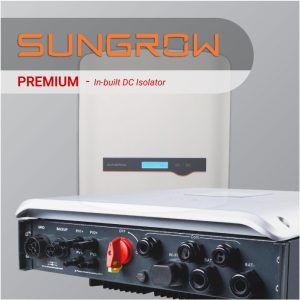
The inbuilt DC isolator is probably the most significant improvement to the Sungrow. The inbuilt DC isolator makes for a much neater install and removes a weak point of an external DC isolator.
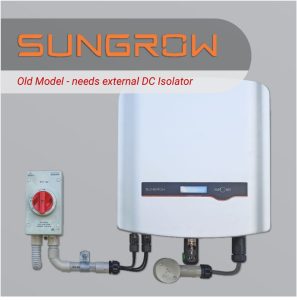
Isolators shall not have direct exposure to sun and rain” (ASNZS 5033 2014 amendement 2, 2018 clause 4.3.3.3.2).
Because the old Sungrow inverter didn’t have an integrated isolator, we needed to install that ugly red switch next to the Sungrow – but out of the sun and rain. This made the installation options of the old Sungrow inverter ridiculously inflexible.
Now that the new Sungrow has a DC isolator neatly tucked away under the inverter, we can install it anywhere. And, if we still have to install the Sungrow inverter on a northern wall, we can match it with our in house designed Sungrow inverter shield.
Sungrow’s Monitoring platform options
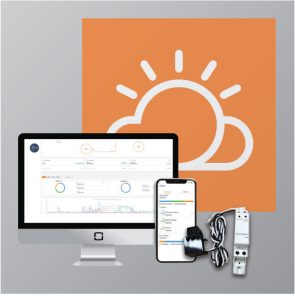
A year ago, Sungrow released their consumption monitor (also called a Smart Meter, or Sungrow Energy Meter). The consumption monitor allows the inverter also to monitor household consumption rather than just inverter production. However, Sungrow’s previous inverter model didn’t monitor household electricity when the solar turned off at night.
To solve this issue, the new Sungrow Premium inverter now offers what I call “night-mode”. Sungrow’s night-mode allows you to see what your home is consuming 24/7, both instantaneous and in a historical graph format. Limited consumption monitoring was the main downfall of Sungrow’s monitoring platform. Now that Sungrow offers night-mode, any other quibbles I have with Sungrow’s monitoring platform are only nit-picking.
Sungrow chose to use a single-phase CT meter (clamp-on). This is in contrast to follow Fronius’s choice of a whole current smart meter. This makes the Sungrow meter almost $100 cheaper to buy and easier to install. Because we don’t need to run the entire household current through Sungrow’s little gadget, hopefully, it will prove more reliable than the Fronius Smart Meter. Sungrow’s s100 meter is a class 1 meter, so accuracy isn’t an issue.
Sungrow’s Grandma mode
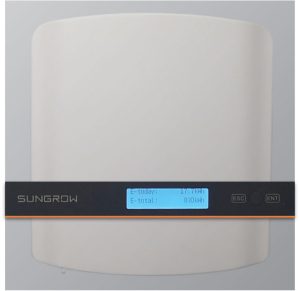
I don’t want that fancy interweb stuff. I just want my grandson to tell me if the thing is working – that’s all!
Sungrow and Solar Analytics integration
My mate Nigel Morris called while I was halfway through this blog with some big news: Sungrow is integrating with Solar Analytics monitoring! Solar Analytics is hands down the leading third-party inverter monitoring platform in Australia. Nothing else comes close. Solar Analytics have asked us to roll out this new offering on a trial basis – before they offer it to the wider market. All going well, it will be available to everyone by the end of 2020. $125 will buy you a five-year Solar Analytics subscription for your Sungrow inverter. That’s cheap as chips. This is what you get:
Solar Analytics Performance alerts
Performance alerts are Solar Analytic’s core claim to fame. Every monitoring system will tell you what your Solar system produced. Solar Analytics tells you what your Solar system should have produced. Has a tree been growing over your panels? Have you got a fault with your system? Solar Analytics is designed to hold your solar system to account.
Solar Analytics tirelessly work on a bunch of fancy solar production algorithms. The algorithms use your solar array data, historical data, weather data, and nearby systems performance to monitor your system performance. To be fair, Solar Analytics hasn’t always been great at getting the alerts right. Some of our past customers have sent their Solar Analytics alert emails to junk mail because there were too many false alarms. But it seems recently Solar Analytics have been tweaking their secret sauce, and we see fewer false alerts than we were before.
Performance alerts are an almost insurmountable problem. Ask any Enphase or SolarEdge guru, and they’ll tell you that inverter performance alerts are too sensitive or not sensitive enough. Solar Analytics is not immune to this problem. However, unlike any inverter manufacturer, creating performance is core to the Solar Analytics business model. They don’t do it perfectly, but they do it better than anyone else.
 Solar Analytics Savings Analysis
Solar Analytics Savings Analysis
Sungrow’s own monitoring platform (iSolarCloud.com) is pretty useless when it comes to calculating your savings. Sungrow has told me that updates are coming, but I can’t see the user interface ever being half as good as the Solar Analytics user interface. Solar Savings is what most homeowners are interested in: will my system really pay itself off in 3 or 4 years? And how can I improve my payback period? SolarAnalytics answers those questions with an easy to interpret dashboard.
 4G or WiFi
4G or WiFi
No DC Measurements
Your standard Solar Analytics hardware and subscription may have reliable 4G, but it does not tell you the voltage and current of the Solar Panels. It can’t. This information needs to come from the inverter itself. DC measurements may seem like irrelevant information to most end users, but DC voltages and currents are an invaluable fault-finding tool for my service team. And this is my biggest issue with Solar Analytics. We can’t rely only on the Solar Analytics 4G connection to tell us what’s wrong with your system; we need to keep the inverter online also.
The new Sungrow – Solar Analytics integration relies on Sungrow’s less reliable Wifi (or hardwired) internet connection. If you make changes to your modem, you’ll need to reconnect your inverter to WiFi by following this Sungrow WiFi reconnect video. But that’s not such a bad thing – we want your inverter connected to the internet for DC monitoring.
Solar Analytics tells me that, in the future, their new Sungrow integration will also display the DC Voltages and DC Currents. That’s not a huge deal because we have access to the Sungrow portal anyway. But I’m sure Solar Analytics will present the DC measurements with a superior user interface
Sungrow Inverter Natural Cooling?

By comparison, the Fronius inverter is spacious and has internal and external fans and a cooling chamber that pumps the heat away from the heat sink. Fronius is cool in more ways than one. The Sungrow by comparison often feels alarmingly hot to touch. That’s normal for a Sungrow – but it’s not great for electronics. On cooling capacity alone, it’s logical to assume that Fronius inverters will outlast Sungrow inverters.
Sungrow Surge Protection?
Nope. The Sungrow spec sheet spruiks surge protection on the front page of the spec sheet like it’s a feature. If it had replaceable cartridge surge protectors on it, that would be a pretty cool feature. But all the Spec sheet is referring to is Metal Oxide Varistors (MOVs) that are required in all solar inverters according to international inverter standards IEC62109.
Sungrow’s Arc Fault Circuit Interruption
Sungrow was the first inverter on the Australian market to come with built-in AFCI or Arc Fault Circuit Interruption. AFCI is what it sounds like. If the inverter detects an arc fault anywhere in the solar installation, the inverter will turn off, and the arc fault will disappear. I spent several hours testing this feature on the Sungrow inverter by arcing out rooftop isolators until they caught on fire. I can report 2 findings.
- AFCI is not likely to nuisance trip.
- AFCI is not likely to trip unless you have some serious welding type arcs going on.
Sungrow’s input limitation
A significant difference between the Sungrow and Fronius inverter range is the input current limitations. See the table below. For more technical information, check out this Combined Sungrow Inverter Spec.
 Sungrow inverter warranty
Sungrow inverter warranty
Sungrow has joined the Solar Industry’s race to the longest warranty and backed their inverter for 10 years. That’s 10 years on parts and labour. It’s a big call from Sungrow! We were Sungrow’s warranty agent for several years – they are really efficient and easy to work with. I have full confidence that they will honour any warranty issues for the 10-year duration. And they’ll do it without the fuss that we see from many other inverter manufacturers.
Here’s a funny story, which is a plug for both Solar Analytics and Sungrow. Before Sungrow released their premium inverter, they gave me one to test and destroy. It handled everything I threw at it – or so I thought. Then, a couple of days ago, we integrated Solar Analytics, and I received an “overperformance” alert.
Sungrow’s monitoring platform didn’t alert me to this apparent fault; it’s not designed to. The inverter could have carried on for years, reporting a 200 per cent overperformance. Instead, I received a call from Nigel Morris and an email alert from Solar Analytics telling me the system was overperforming.
Unfortunately, I had not stumbled upon the secret to increasing Solar production by 200 per cent. It was a Sungrow metering hardware issue. Sungrow told me to replace the inverter under warranty.
I asked Shane, my service manager, to arrange a Sungrow warranty. But he didn’t know how to. After 20 months as my service manager, he has not seen a single Sungrow inverter fail. That alone drives home Sungrow’s reliability. To date, we only installed 85 Sungrow inverters. But to not have a single failure in the last 20 months is pretty impressive.
Conclusion
With the in-built DC isolator, in-built screen, updated monitoring platform, and the option of Solar Analytics, Sungrow is now a true contender. It still has an inbuilt fan, and the cooling system is not all that “natural”, but it’s quiet. You could mount it in your living room – if you were weird. It can be mounted in the partial sun. It could even be mounted in full sun with one of our shmicko Sungrow inverter shields.
The surge diverter is a red-herring and the arc fault circuit interrupting didn’t impress me. It’s not built as well as the Fronius Inverter – most notably in the cooling arrangement. But it’s going to save you a fist-full of dollars compared to the Fronius inverter, especially if you add in the consumption monitor. The new Sungrow Premium inverters are tried and tested, solid, budget solar inverters.
Let us know your experience with Sungrow inverters below.

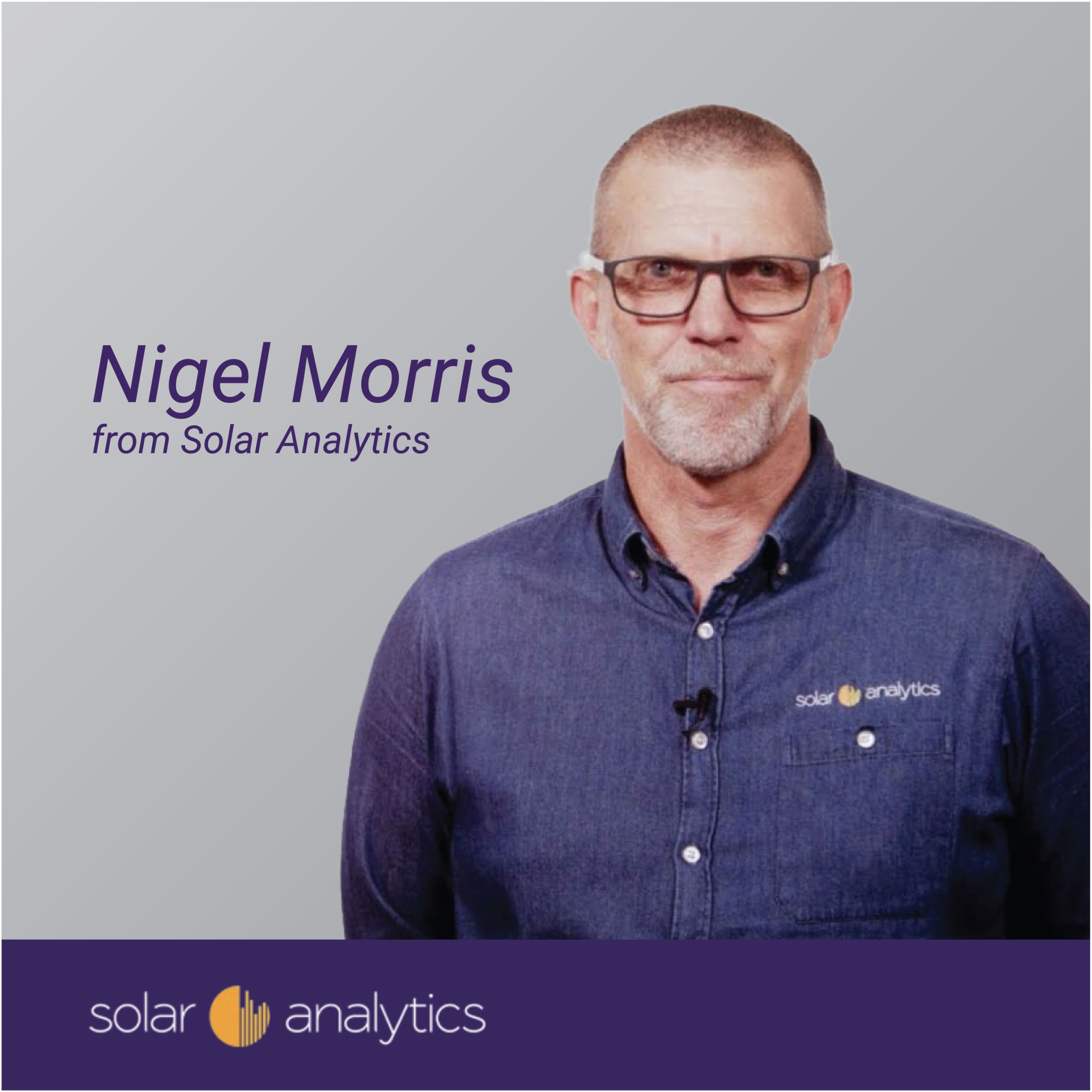

 Solar Analytics Savings Analysis
Solar Analytics Savings Analysis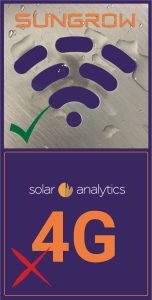 4G or WiFi
4G or WiFi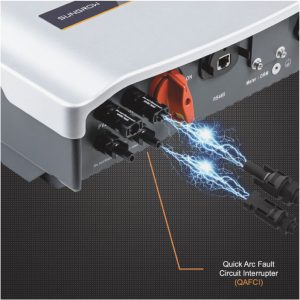

 Sungrow inverter warranty
Sungrow inverter warranty
10 Responses
Hi Kevin, Mark explains why he would go with Fronius over other inverters including Sungrow here: https://www.youtube.com/watch?v=jZXhYvA_fSI
G’day, I have been wrestling with Fronius v Sungrow (SG5 ORS/SG5K-D) I think the SG5K-D has won it. Fronious copped a bad wrap for poor service performance from 2 installers that were previous solid Fronious installers. I had the same issue I called, and they said they would call back they did not and thus lost a sale. Additionally, because I live in a very hot climate I wanted the best cooling system possible for componentry longevity. This is where Sungrow wins, odly. Because it is passive cooled it is designed to work without forced cooling, at this point it is behind Fronious, however introduce a rack of 0.2 amp 80mm computer fans run from a 15w solar panel and place 1″ below the cooling fins and you now have a superior cooling system. For not calling me back, having a more expensive product, not looking after installers service needs, and a poorer warranty Fronious lost a customer.
It’s definitely not just marketing talk, but I would be surprised if sungrow has a functioning shade management now. They didn’t last time I checked. I’ll have to look into it. They also promised me in the past that they had afci but they didn’t have it.
We are installing 32 420WP Jinko solar panels attached to two Sungrow SHR5.0RT inverters attached to two Sungrow SBR9,6KW batteries. Too soon to say how it will work. But I am wondering if anyone has experience with using the shade management functionality of the Sungrow hybrid inverters. We have some trees in the garden that cast some shadow on our roof / panels in the afternoon, and we were wondering if someone is in a similar situation and can share his/her experience of how well the Sungrow shade management functionality can minimise the impact of that on the Wp generated by the panels. Did someone already try to see what is the difference between leaving the shade management functionality on and switching it on? Does it make a substantial difference if you switch it on or is it just marketing talk? What settings do you recommend to you for this functionality in the inverter (did you set the period so that he scans the IV curve every hour, every half an hour in order to recalculate the optimum working point during shady periods)?
Hi Sai, it comes with night mode turned on. Could be a firmware issue. Sungrow are having heaps of issues, so maybe they didn’t want to deal with this one. Or maybe you didn’t actually get the premium? You should be going back to your installer and asking for them to sort it out. It is defiantly a feature of the premium inverter.
Hi Mark Your review on Sungrow inverter helped me to decide to choose this brand. I have picked SG5K-D premium. I have also installed S100 meter to monitor self-consumption and try to enable “night-mode” but it not working. At night, the inverter shut down and was unable to monitor. Could you please tell me how to enable night-mode? I have talked with my installer and Sungrow support person and they don’t know about this feature. Sungrow support person said inverter(SG5K-D premium) can’t be turn-on at night even with the night mode feature. Thanks Sai
Hi Mark and team from Sydney In April 2021 we had the Sungrow 8kW you recommended in this article installed with 9.36kW of Jinko Tiger panels and integrated Solar Analytics So far all these parts are performing well. The Sungrow inverter is almost silent which is important because opposite it is the wall for a neighbour’s bedroom and behind it inside of the wall is our home office Isolarcloud’s 5min datapoints lag by about 7-8min so I keep track of live grid usage via Powerpal reading flashes from my Ausgrid smart meter Or live solar & grid stats via Power Sensor. It’s a shame the old Wattson solar monitoring gadget for inside homes never caught on so we didnt have to rely on apps or walk outside and look at the Sungrow LCD to see what the power stats are It would be a nice to just have a simple display in the kitchen pared to the inverter, showing live +- power stats red for grid and green for self consumption
Hi Tim, your installer is correct in this, it’s unlikely that you would experience any current clipping before the inverter reached its maximum output. It also won’t be an issue as far as longevity or warranty with the inverter. the situation you describe is relatively normal.
Hi Mark, Thanks for all your great work with the blog and your youtube videos. I have learnt heaps! I have a question regarding current limitations for the newish Sungrow SG20RT. I have oodles of North facing roof space, and have talked to a few installers about oversizing the PV panels connected to this Sungrow inverter by 20-30%. As this inverter only has 2xMPPT (with 2 strings on each), it seems that the 600V per string limit is limiting how many panels it can support before maxing out. Many of the common 390w panels have an Open Circuit Voltage (Voc) of around 41v. Based on my location, this would result in a max of 13 panels per string, and a total of 52 panels for the inverter. Thus, the total power of the PV would only 52x390w=20.28kw. This means there is no real oversizing. One of the installers I contacted recommended to use the 415w Jinko Tiger Pro 54HC panels (JKM415M-54HL4-V), which only have a Voc of 37.31v. Based on this, I could have 15 panels per string (within the 600v limit), resulting in a total system size of 60x415w=24.9kw. This allowed for around 25% oversizing (Hooray!). However, after I read your article, I looked up the specs for the Sungrow SG20RT and found it has a max input current of 25A per MPPT. I then checked the Jinko specs and saw they had a max power current (Imp) of 13.48A at STC. With the 2 strings per MPPT, this would result in 26.96A if/when power is at STC. It seems this is considerably over the Inverter specs (although the Isc current is with the inverter’s short circuit specs). When I quizzed the installed on this, I was told this would not be an issue. The reason being is that all my panels, across all strings, would face the same direction (North), and as it is oversized, the inverter would clip the total power well before the panels could get to their max 415w rating. This clipping would result in reduced current, meaning the current would never go beyond the 25A maximum of the MPPT input. This did make sense at the time, but now I am so sure. Can you please advise if having the Jinko 415w panels (with Imp at 13.48A), in this configuration is safe and will not affect the Sungrow inverter? It seems to be the best option I have to oversize the PV for the Sungrow, and the installer said that Sungrow would allow this configuration (and not void warranty). Your expert advice would be much appreciated!
Hi Mark, Any plans to do a head to head comparison between Fronius Gen24 Plus & the new SunGrow hybrid inverters? On paper it seems like SunGrow SH10RT is a superior product compared to Fronius Symo Gen24 Plus. It’s cheaper, has better functionality, and longer warranty! And if their reliability continues as you’ve experienced, then it certainly should be considered by more and more people, rather than just go for the Fronius products. Kevin